Click to see the list of links
213) More about Energetics Technologies
Ludwik Kowalski (20/4/05)
Department of Mathematical Sciences
Montclair State University, Upper Montclair, NJ, 07043
Yesterday I visited Energetics Technology (ET), a small private company in Israel (subsidiary of an American company) conducting cold fusion
research (previously described in unit # 204). The company is also interested in magneto-hydrodynamics processing in metallurgy, a field with
which I am not familiar.
Two things impressed me the most. The first was the high caliber of technical expertise and equipment assembled at ET in the last three years
to deal with several aspects of cold fusion. The second was the difficulty under which industrial research is conducted. I am familiar with
scientific research at universities and in national laboratories; the area of industrial research is new to me. Academic researchers usually
have tenure; scientists conducting industrial research here work under a contract that is expected to be renewed each year. This, I suppose,
has to do with the high risk of investing in a controversial technology.
The company which is focused on the use of a special wave form (SuperWave) proposed by one of the company's owner, Dr. Dardik, is headed by
Shaul Lesin, an expert on magneto-hydrodynamics. The second in command is Arik El-Boher (see photos below), conducting research in cold fusion.
He is focusing on glow discharge cells. Arik has six such cells working in parallel. The geometry of each cell is cylindrical -- the anode
(molybdenum or tungsten wire) in the center and the cathode (pure or alloyed PVD coatings on stainless steel cylinder) approximately one
centimeter away.
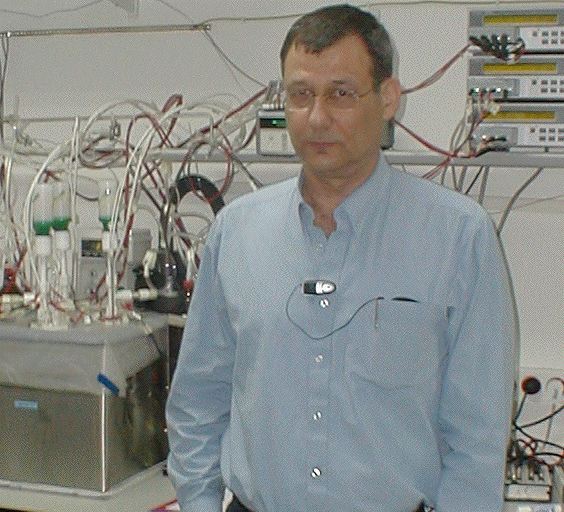
|
. . .
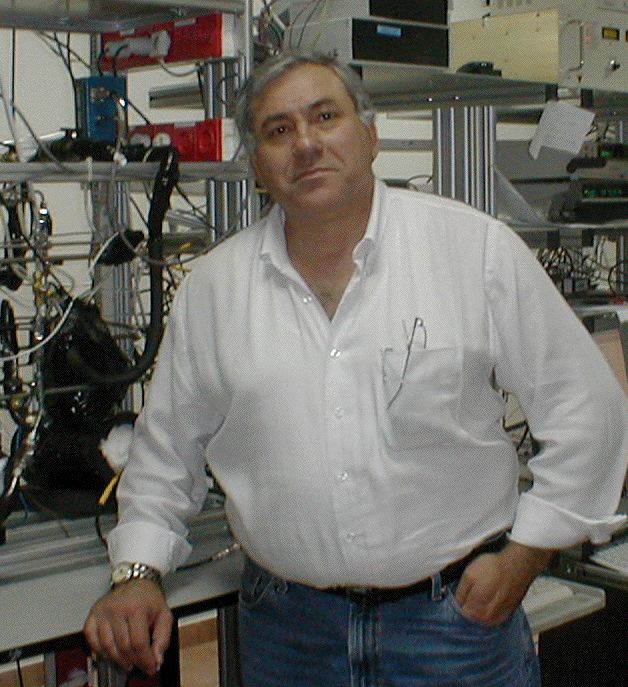
|
At one point I said that my choice would be to have a cathode in the center (to increase the electric field near it). Arik indicated that such geometry was tried but the results were not better than with the presently used cells. He believes that the area of the cathode must be maximized to enhance excess heat. Arik hopes to obtain better results from the ongoing experiments in which thin layers, and sets of layers, are deposited on cathodes.
I also had a chance to talk with other four researchers: Tanya Zilov, Boris Khachturov, Vitali Krakov and Mark Tsirlin. All of them were educated in the former Soviet Union. Tanya is an electrochemist, Boris is a nuclear physicist, Vitali is a physical chemist while Mark is a material scientist. I can not imagine a better set of specialists hired to investigate practical aspects of cold fusion. Each of them spent about an hour with me, explaining their setups and talking about results. The pictures of these scientists are shown below.
. .
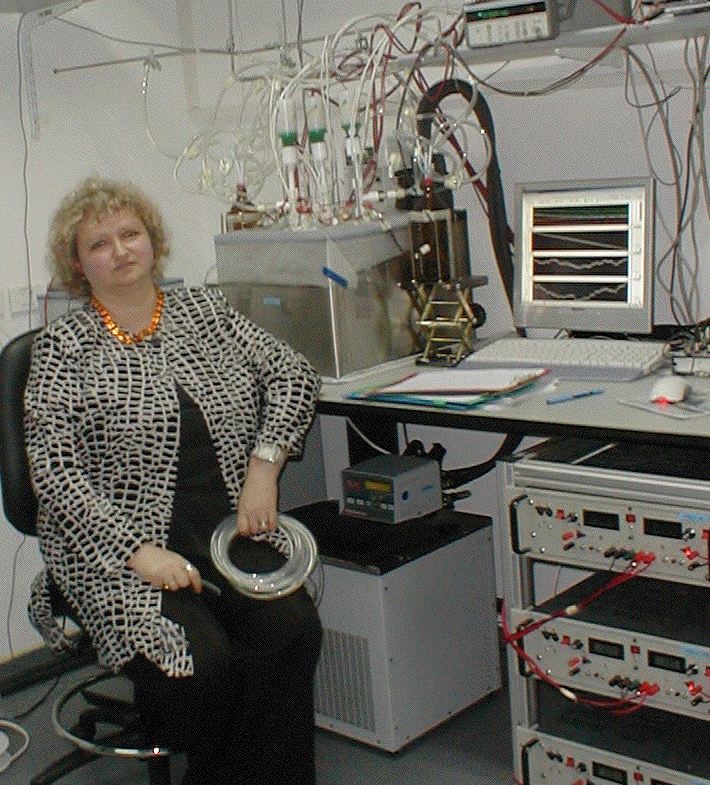
|
. .
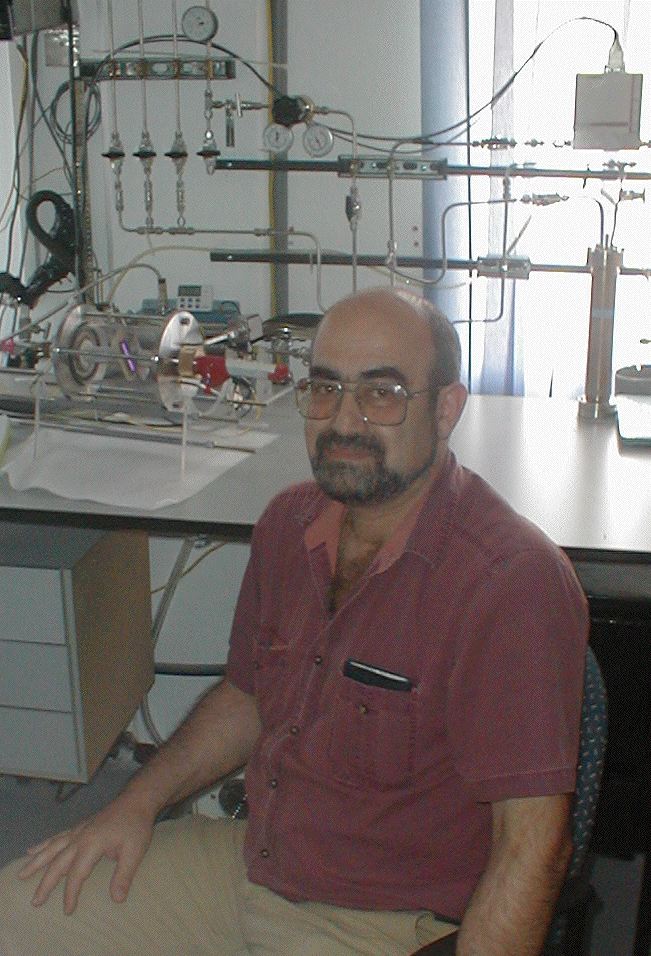
|
. .
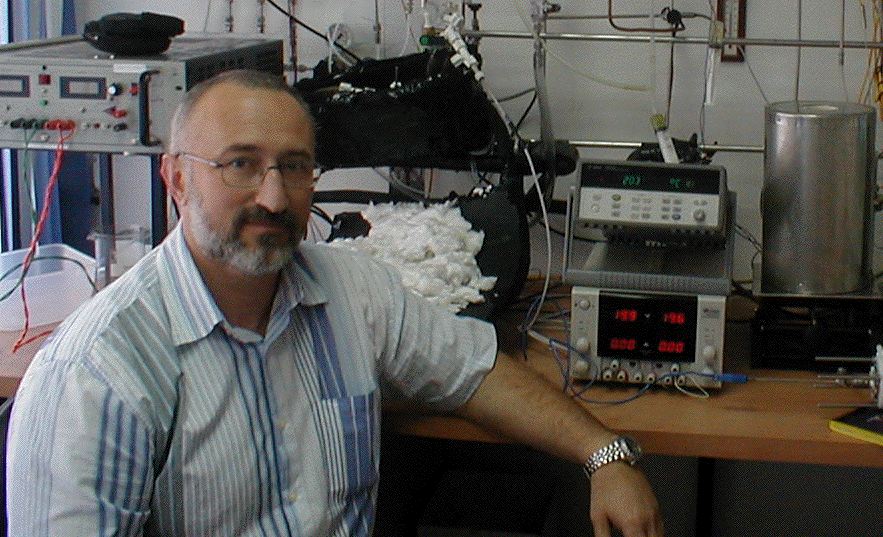
|
. .
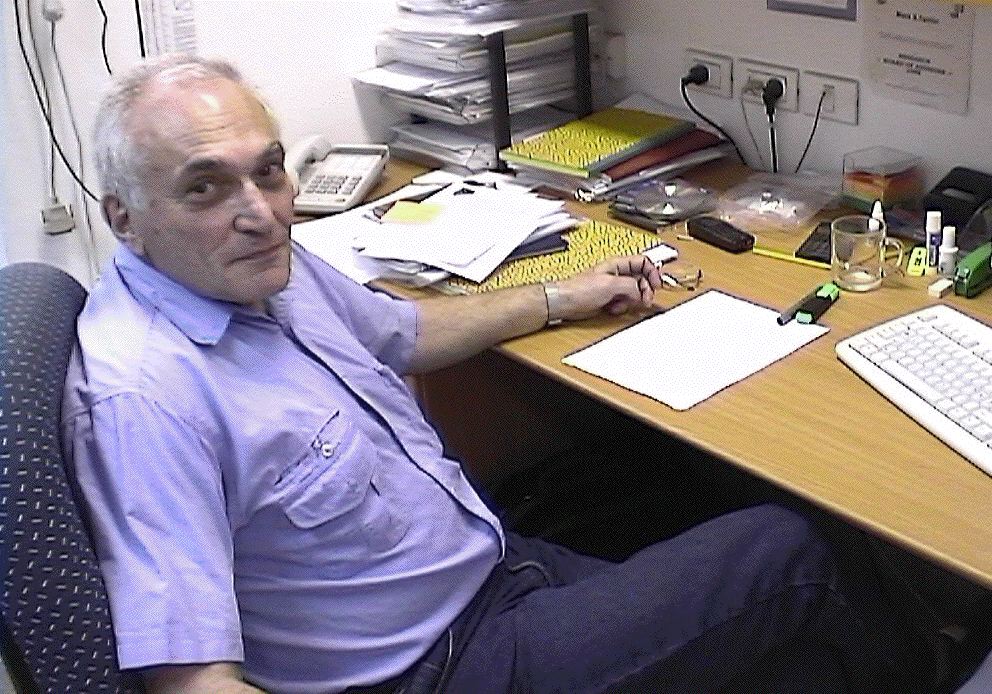
|
Tanya has a set of nine electrolytic cells (heavy water and LiOD) working in parallel. Each cell is equipped with a commercial recombiner
(turning oxygen and hydrogen into D2O) and with a set of temperature sensors. Loading of deuterium ions into cathodes is controlled
by measuring cathode resistances. Rare episodes of very high efficiencies (excess heat of up to 2500% of electric energy supplied) at low
reproducibility rate, described in unit # 204, were obtained with electrolytic systems driven by superwaves. Like many other cold fusion
researchers, Tanya does not know why large excess heat is not observed more frequently. A reproducible setup generating excess heat at the
efficiency of more than 100% or 200% would probably lead to a commercial success. Recently in one of their ultrasound electrolytic cell
experiments (after analyzing the experimental data), they achieved an efficiency as high as 1200%. These results will be presented in the
coming workshop May 2005 on cold fusion in Siena, Italy.
At present she and Boris are trying to irradiate cathodes of electrolytic cells with ultrasounds. The idea is to expose palladium
cathodes to cavitational bubbles. Preliminary results from this approach are very encouraging. Excess heat generated at the level of several
watts, she said, is 100% reproducible, but only when the efficiency is low. More specifically, the 100% reproducibility was recorded for
electrolytic cells in which the cathode is Pt and the anode is Pd. They call this arrangement reversed because Pd and Pt are most often used
as a cathode and anode, respectively. The highest efficiency has been14.5%. In my opinion this is a monumental achievement. But Tanya is not
satisfied; the common efficiencies of ~10% she said, are too low to be practically useful. In my opinion, focusing on what is 100% reproducible
would be very useful at this stage. A Russian saying "tishe jedesh dalshe budiesh" (those who advance slowly will get there sooner)
seems to be applicable in this case.
The error of measuring excess heat, in Tania's and Boris' experiments, is close to 1% -- this is good enough to conduct systematic investigations
at the level of ten percent efficiency. That is what I would do in such a situation. Taking advantage of 100% reproducibility I would systematically
investigate effects of various parameters, such as concentration, temperature, pressure, current density, etc. I would not worry about low
efficiencies. Then I would publish the results. Yes, I know that people directing industrial research might be reluctant to share essential
information; academic research, with which I am familiar, is different from research focused on commercial success. My goal would be to identify
the mystery of the NAE (nuclear active environment) that, according to Storms, makes generation of excess heat possible. In other words I would
take advantage of the achieved experimental reproducibility and try to turn protoscience into science. That seems to be the most urgent issue in
the area of cold fusion.
Tanya said that highly reproducible Pd/D loading results were obtained by using superwaves, rather than commonly used dc. Furthermore, the highest
excess heat has been generated using superwaves with very low current density. My first reaction to this was to think about the power factor
(cosine phi due to phase shift between the current and the voltage) at different frequency components. I asked Arik about this. He said that they
do not worry about power factors because sampling rates in measuring voltages and currents are at the level of 50KHz. This is well above the
highest frequency components (up to 1 kilohertzs) of their superwaves. Furthermore, calibration experiments with dc and with superwaves were in
very good agreement (less than 0.5%), using 1 MHz Yokagawa power meter.
Vitali specializes in catalytic materials and in gas loading. If I understood him correctly, he was not able to reproduce the effects discovered
by Case and by Paterson. These effects were described at the 10th cold fusion conference (ICCF10). He works with compressed palladium powders in
dielectric and conducting materials. Mark specializes in the analysis of materials. Using sophisticated analytical instruments, available at Ben
Gurion University and at other Israeli Universities centers, he performs both elemental and isotopic analysis. No evidence of alchemy (production
of new elements) or abnormal isotopic ratios was confirmed by his investigations, even in cathodes that generated spectacular amounts of excess
heat.
He explained to me why results of elemental analysis are so difficult to interpret. For example, relative squares of the X-ray spectroscopic
peaks (EDS method) strongly depend on local topography of the surface bombarded by electron beam as well as on sizes and phase composition of
analyzed area with rather small impurities content. Therefore the obtained results fluctuate widely as one examines different spots even on the
same surface. This complicates comparisons of impurities concentrations for different samples. That factor is usually not mentioned by those
who report on nuclear transmutations. But Mark is fascinated by structural changes on palladium surfaces resulting from such processing. Many
of his SEM pictures have artistic values, as illustrated below.
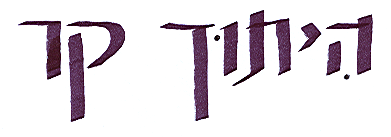
|
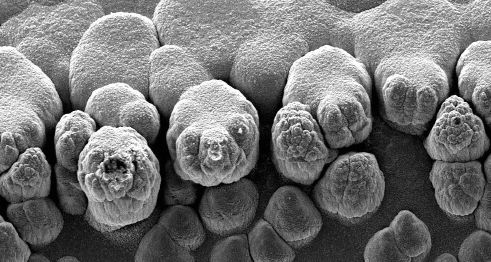
|
Click to see the list of links